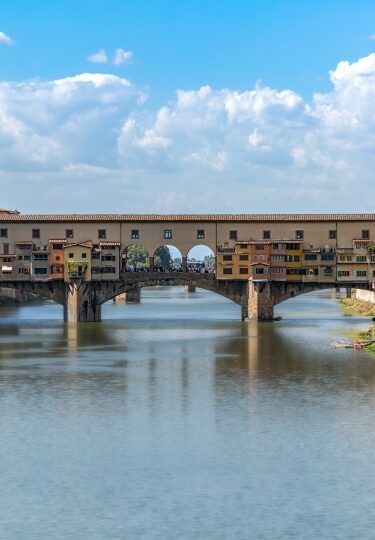The bridges of Florence, Italy are as fundamentally interwoven into the fabric of this grand city as the Uffizi or the Duomo.
Since medieval times, life in the Tuscan capital has been inexorably tethered to the waters of the Arno. The bridges that span this vital waterway make up some of the most instantly recognizable features in the city.
From the Ponte Vecchio, the oldest and best-known bridge in Florence, to the Ponte alla Carraia, each of these has a story to tell. Do as the Italians do and go for a passeggiata, or stroll, along the most beautiful bridges in Florence.
Ponte Santa Trinita
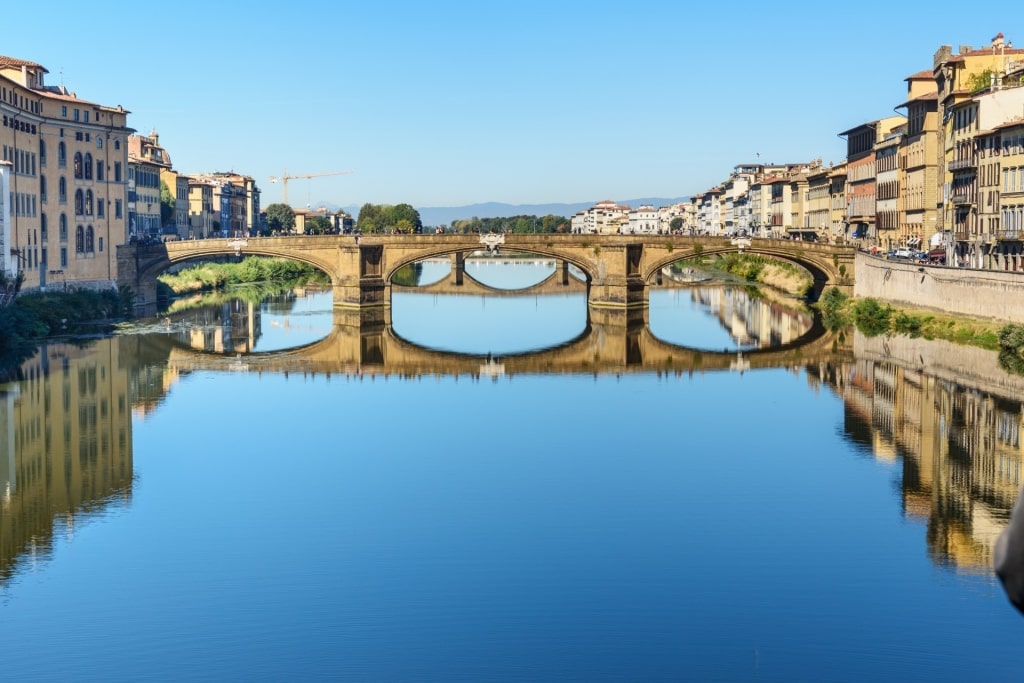
Ponte Santa Trinita
Located just to the west of the Ponte Vecchio is another of the most striking bridges in Florence: the “Bridge of the Holy Trinity.”
Much like its ever-so-slightly more famous neighbor, the Ponte Santa Trinita has a long, storied history.
A bridge has stood at this spot across the Arno River since the 13th century, although it was originally made of wood. Architect Taddeo Gaddi has also been credited with engineering a bridge with five arches that spanned the river during the flood of 1557.
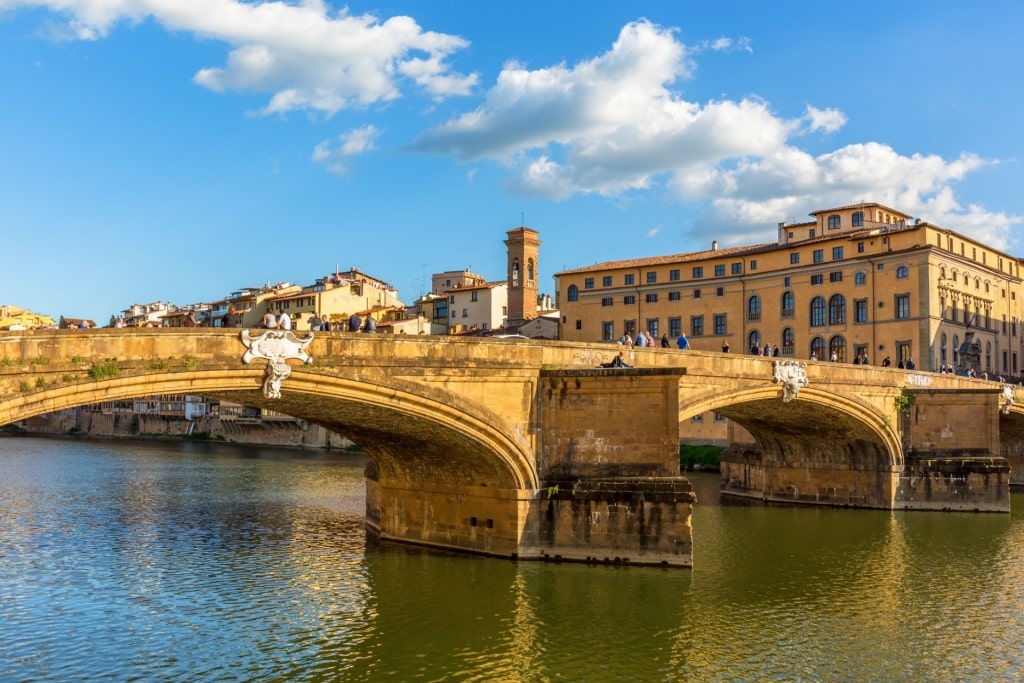
Ponte Santa Trinita
The subsequent bridge dates back to the Renaissance, when it was designed by the illustrious architect Bartolomeo Ammannati in the late 1560s. In honor of the wedding of the Grand Duke Cosimo II de’ Medici in 1608, some of the finest Florentine sculptors of the age created four statues representing each of the four seasons to decorate the bridge.
Sadly, like virtually all of the bridges in Florence, Santa Trinita was intentionally detonated by German troops in their attempt to escape Allied forces towards the end of World War II.
Rebuilding the current bridge, along with so many parts of the medieval city center damaged during the conflict, was no minor undertaking.
Architect Riccardo Gizdulich oversaw the proceedings in 1958, making sure to use as many of the original stones retrieved from the riverbed as possible. Today, the bridge is once again a proud symbol of Florence, as well as the oldest elliptic arch bridge on the planet.
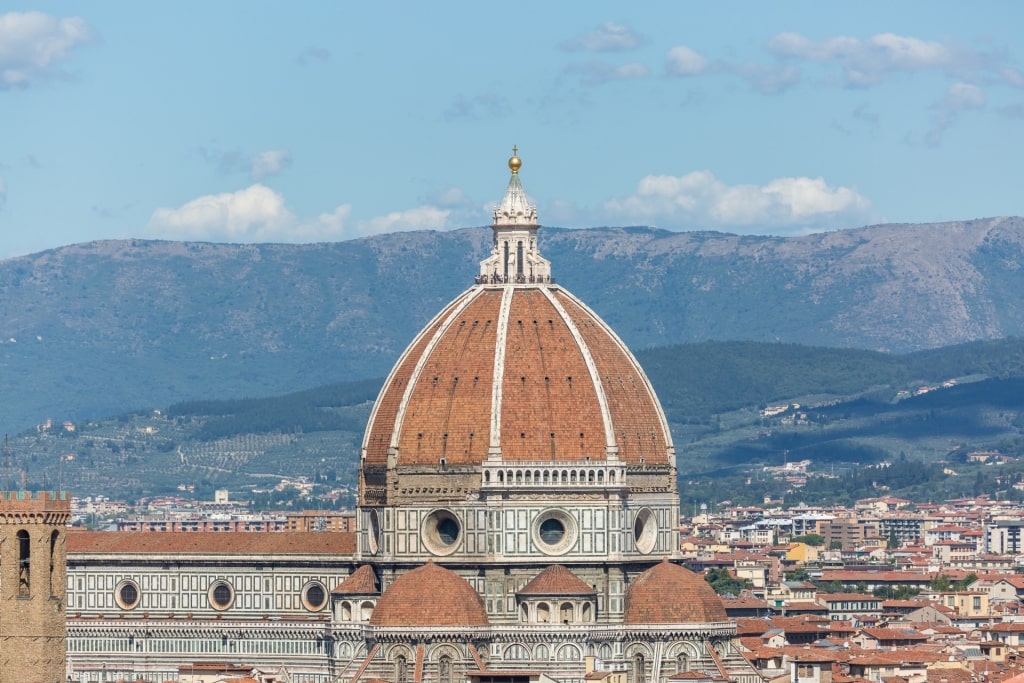
Cattedrale di Santa Maria del Fiore
If you walk over the bridge past the spectacular Cattedrale di Santa Maria del Fiore, or “The Cathedral of Saint Maria of the Flowers,” towards the charming Piazza del Mercato Centrale, you’ll reach the Trattoria Za Za, a fixture in town since 1977.
Opened by local restaurateur Stefano Bondi, this humble eatery has been serving hearty Tuscan food to generations of Florentines.
The menu here is both extensive and refreshingly unpretentious, with plenty of country-style classics like Siena-style pici pasta doused with a tomato sauce augmented with cream and sausage, or the filling ribollita stew made with leftover bread and Tuscan kale.
The outdoor tables on the piazza also happen to be the perfect place for prime people-watching while sipping an espresso.
Ponte Vecchio
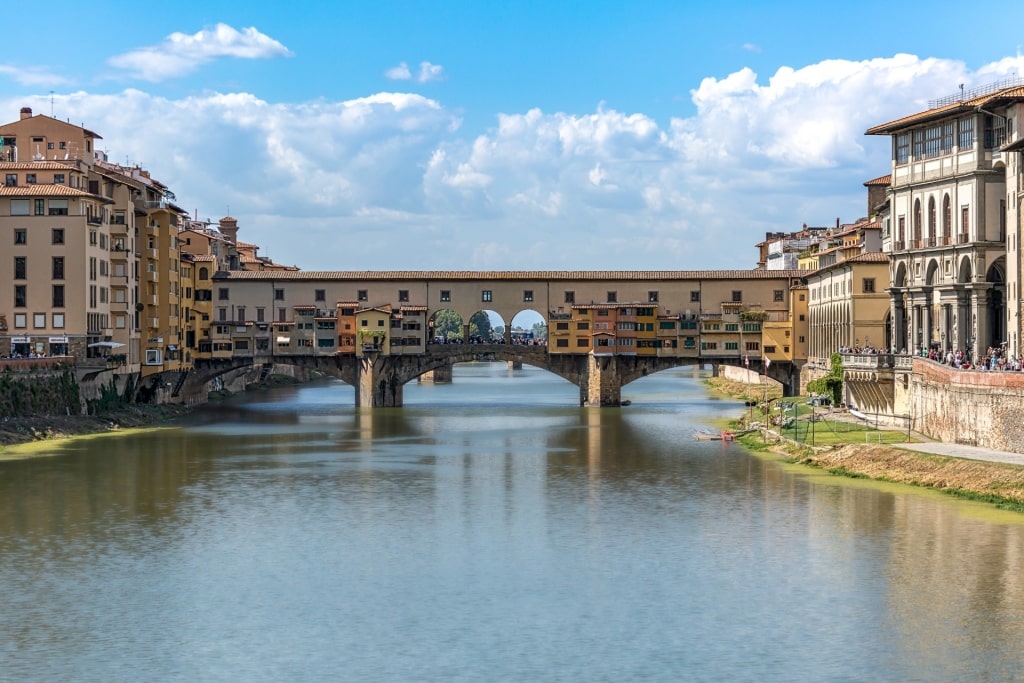
Ponte Vecchio
Even in a city that practically qualifies as a living museum, few sights or spaces are as iconic as the Ponte Vecchio, the covered pedestrian bridge that spans the Arno River right in the heart of town.
The view is so swoon-inducingly romantic that it’s easy to see why so many couples have become engaged here.
The name quite literally translates as “Old Bridge,” a title that feels particularly apt given that there has been a bridge around this location since ancient Roman times.
Although some of the details surrounding that particular crossing have been lost to history, scholars have a fairly detailed record of the bridge dating all the way back to 966 A.D.
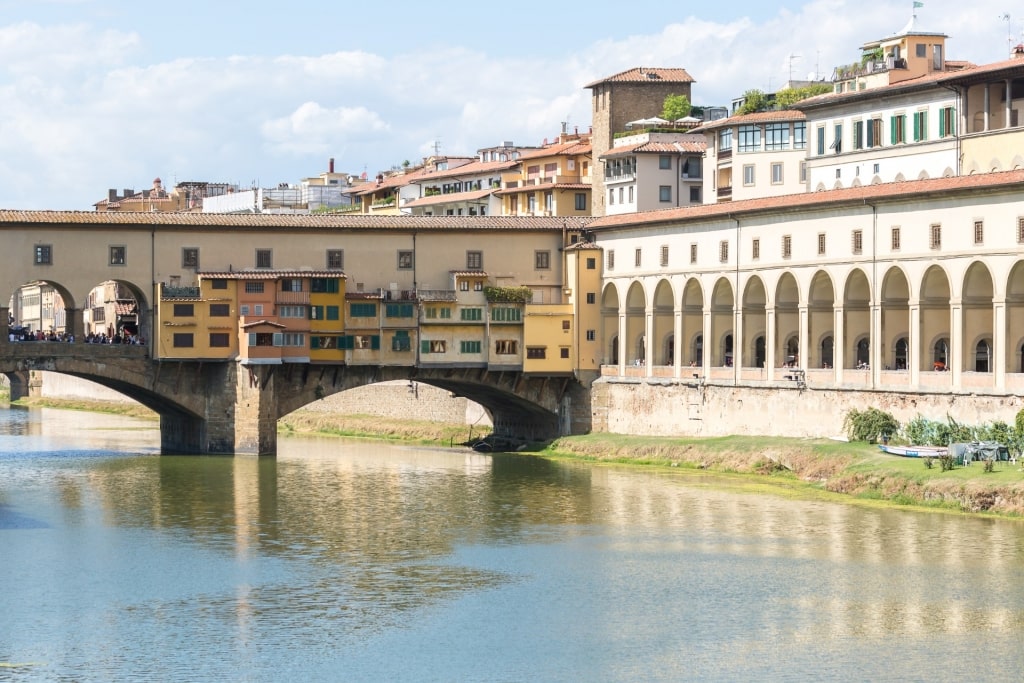
Ponte Vecchio
Like the beautiful Italian city itself, the Ponte Vecchio in its various iterations has weathered all sorts of disasters and upheaval over the centuries. A devastating flood wiped out the bridge in 1345, forcing the Florentine people to rebuild it.
During the Second World War, German soldiers destroyed every major bridge except the Ponte Vecchio in Florence in their attempt to flee the city. In another serious flood in 1966, the bridge miraculously survived.
No one knows for sure who designed the original structure, although in the 16th century, Giorgio Vasari, one of the world’s first real art historians, claimed that it was the work of none other than Taddeo Gaddi, the renowned Italian painter.
While later scholars have debated this, the bridge is widely recognized for its elegant, yet functional design and a sense of proportion that mirrors Renaissance ideals.
As time went on, the role of Ponte Vecchio has evolved. The structure covering the bridge was originally intended as a defense mechanism to keep enemy arrows at bay. By the 13th century, shops began appearing along the bridge as merchants gathered to sell their wares.
In 1593, King Ferdinand I was appalled by the stench of rotting food and chemical waste left by tanners, fishmongers, and butchers. He issued a decree banning all forms of business except for jewelers and goldsmiths, who catered to the city’s wealthy ruling class.
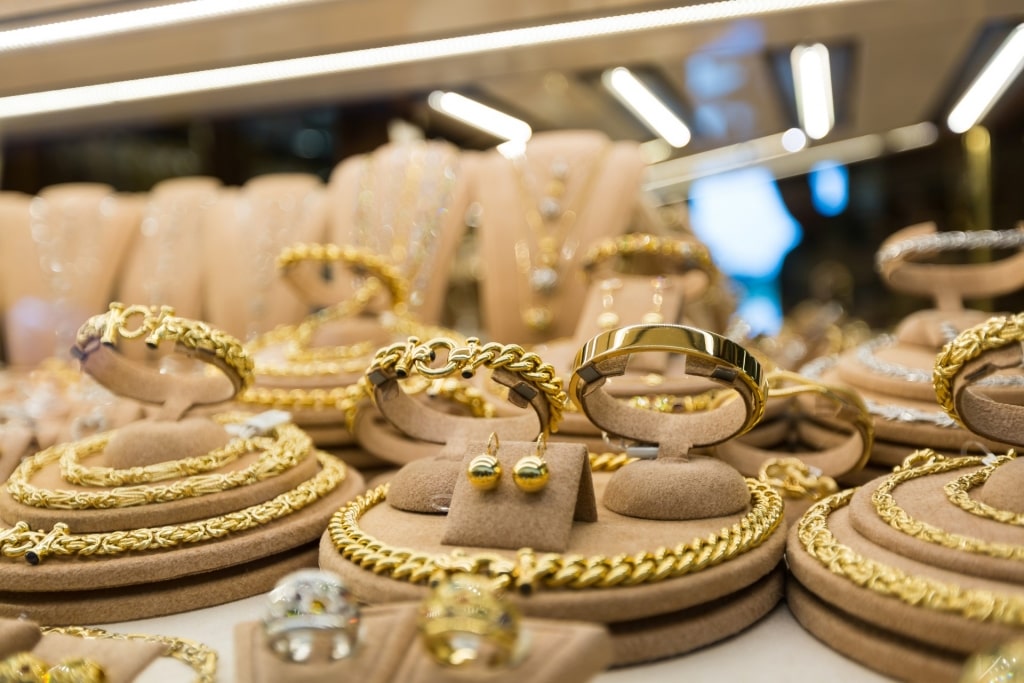
Jewelry
Today, the Ponte Vecchio is host to a wide array of shops mostly selling scarves, jewelry, and assorted souvenirs.
Since the bridge goes from the pedestrian area toward the southern end of the Piazza della Republicca almost directly to the Palazzo Pitti, the former stronghold of the powerful Medici family, it’s almost impossible not to pass over it during a visit to Florence.
There’s an almost overwhelming amount to see and do in this neighborhood—not to mention some truly fabulous places to eat. One of the best of these is the Trattoria 4 Leoni, or “four lions,” an especially charming neighborhood restaurant that is open daily starting at noon.
All of the pastas are excellent, although the fiocchetti di pera in salsa di taleggio e asparagi, pear-stuffed pasta with a luscious taleggio cheese sauce and asparagus, is a real standout.
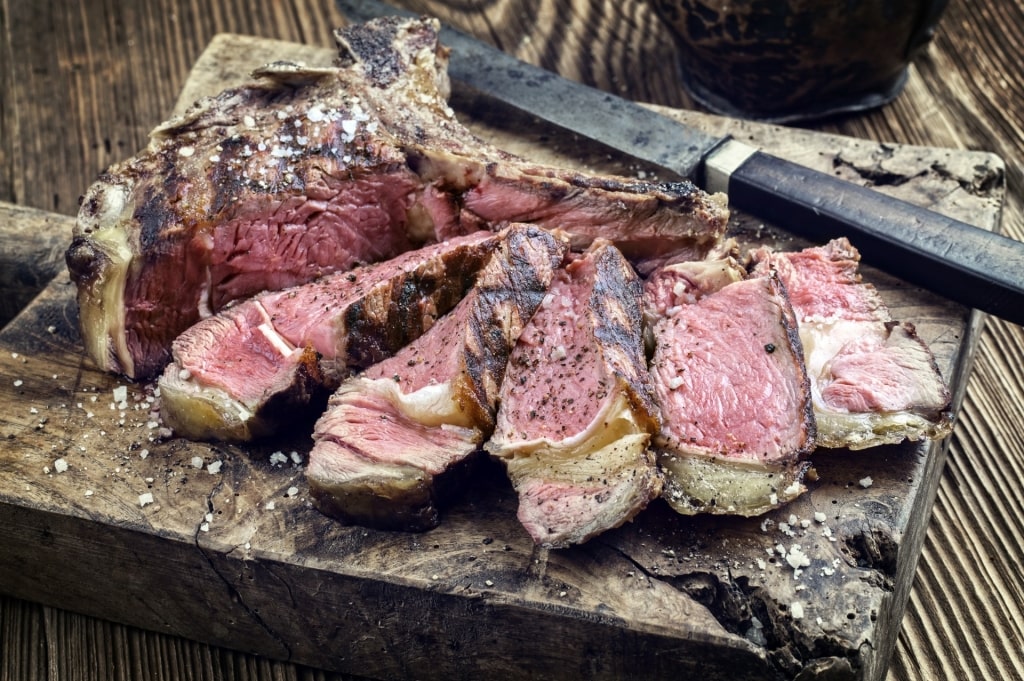
Bistecca alla Fiorentina
For carnivores, the bistecca alla Fiorentina is one of the best dishes in Florence. Waitstaff present the thick-cut slab of beef from Tuscany’s prized white Chianina cattle uncooked, then grill it over charcoal, drizzle it with grassy olive oil, and finish it with flaky sea salt and a squeeze of lemon.
It goes sensationally well with the oven-roasted potatoes or a plate of lighter-than-air fried zucchini blossoms, but it really needs no adornment.
Read: The Ultimate Guide to Art in Florence
Ponte alla Carraia
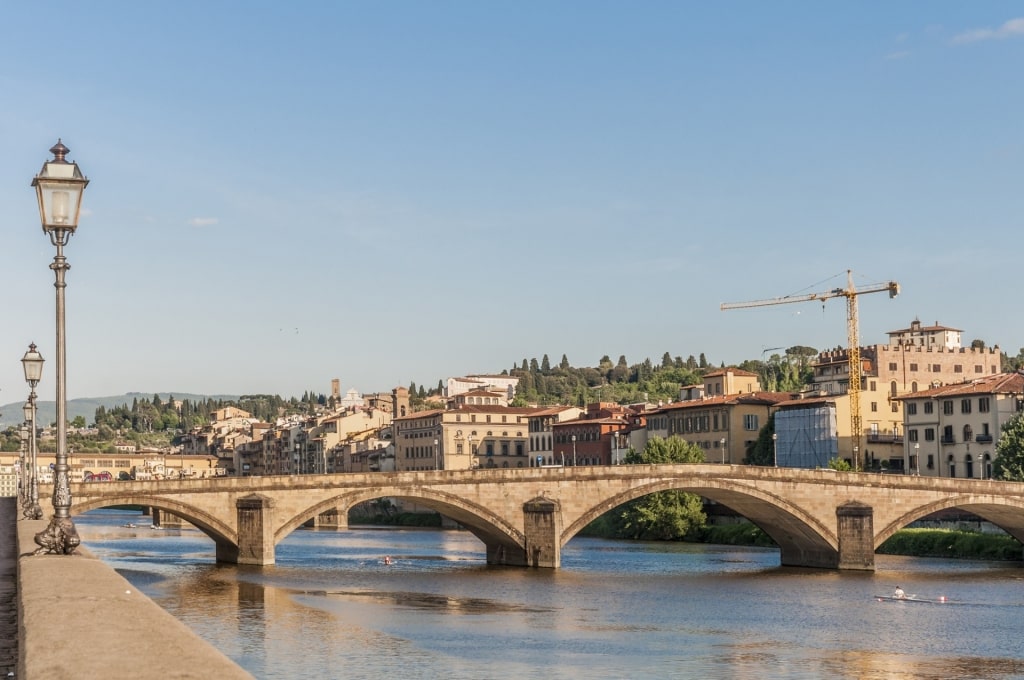
Ponte alla Carraia
Much like its neighbor to the east, the Ponte Santa Trinita, the Ponte alla Carraia has evolved since the 13th century from a humble wooden bridge to a stone one to a grand Renaissance Era structure with five arches, also designed by Bartolomeo Ammannati.
And like its neighbors, it fell victim to the retreating German military, which left the ruined bridge to sink to the bottom of the Arno River. Architect Ettore Fagiuoli was tasked with rebuilding the structure in the late 1940s after the end of the war.
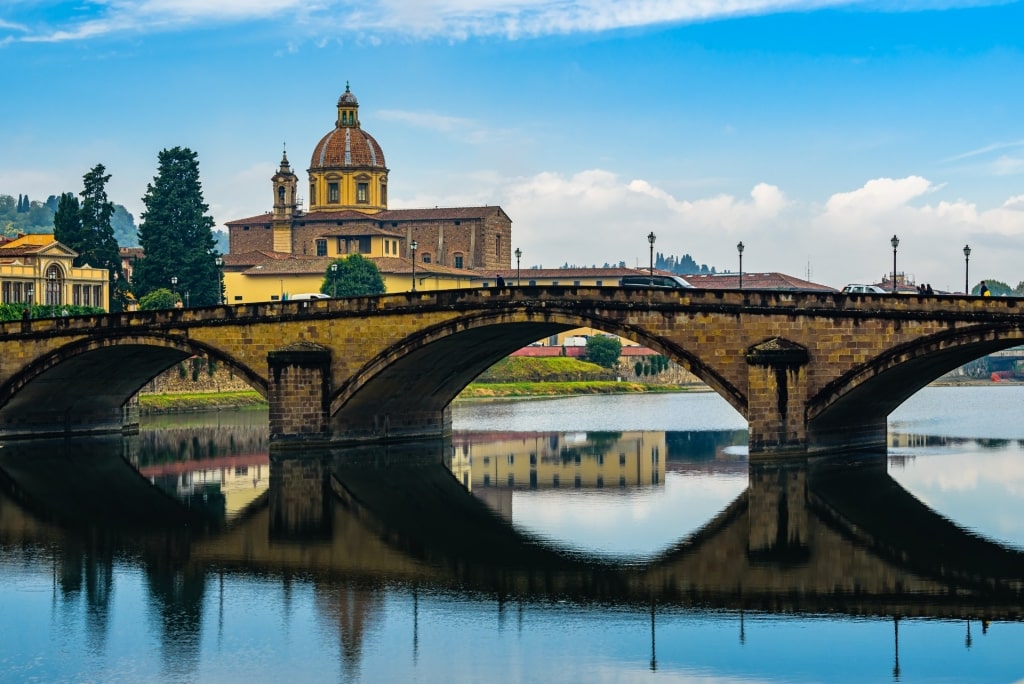
Ponte alla Carraia
One particularly noteworthy feature of the Ponte alla Carraia is that it serves as the connecting link between the district of Oltrarno and the rest of the city.
While the centro storico, or medieval city center may be more photographed, lively Oltrarno is where young Florentines tend to hang out. The vibe here is infectious and it’s easy to while away a whole afternoon simply soaking it all in at one of the many top-notch restaurants and bars.
Grab a table at Le Volpe e L’Uva, or “The fox and the grape” after the classic Aesop fable, a practically perfect wine bar that starts pouring curated flights at noon. The extensive selection of wines by the glass features standout varieties that Italy is known for, although with an emphasis on Tuscany’s renowned wines, and changes constantly.
There’s also plenty of cheese and charcuterie to go around, as well as simple, yet thoughtfully prepared small plates such as fresh porcini mushrooms with truffles of a warm toast with molten asiago, wafer-thin lardo, and a drizzle of honey.
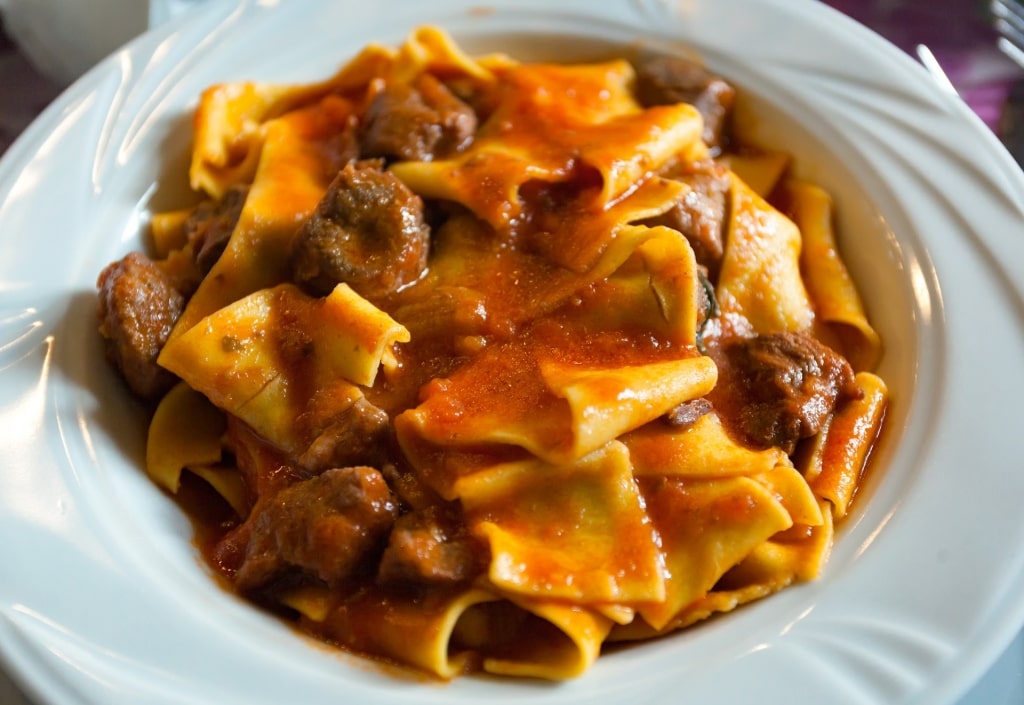
Pappardelle
For an old-school Florentine experience, head to Trattoria Casalinga, a family-owned establishment that has been twirling up plates of pasta since 1963. From the baccala braised with chickpeas to the pappardelle with wild boar ragú, everything here is homely in the best possible way.
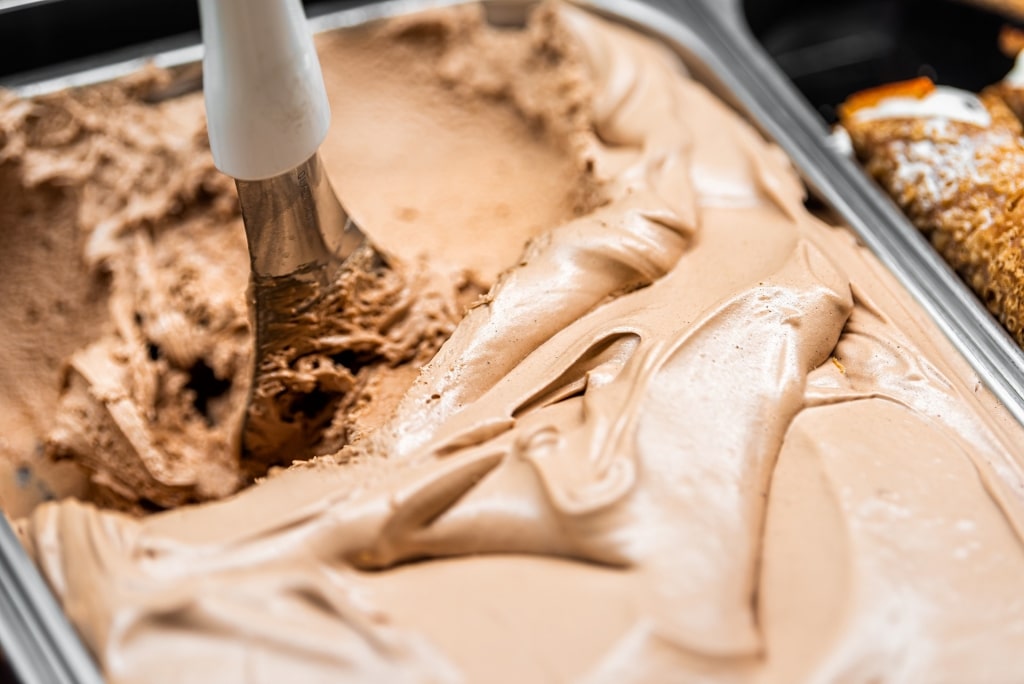
Gelato
As tempting as the tiramisu at Trattoria Casalinga may be, if you still have room after lunch, truly exceptional ice cream awaits just steps from Ponte alla Carraia.
Look for the handsome green-and-gold awning to find Gelateria La Carraia, a local gem opened by a husband-and-wife duo more than three decades ago. Flavors like salted butter caramel, ricotta and pear, and white chocolate with pistachios are all made by hand in small batches.
Ponte Amerigo Vespucci
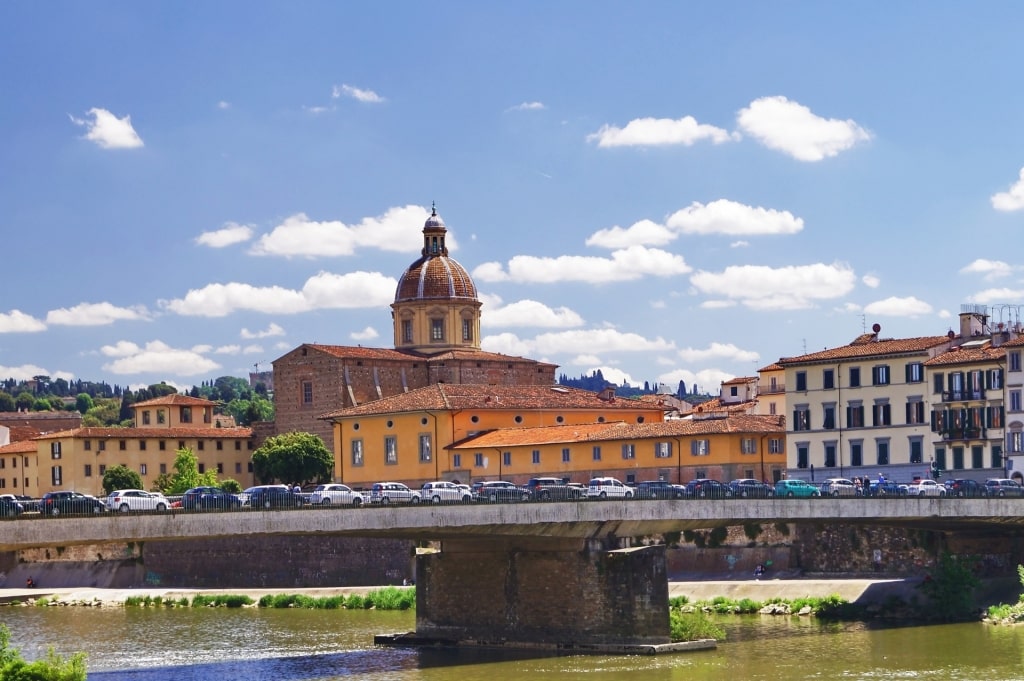
Ponte Amerigo Vespucci
Completed and opened to the public in 1957, the Ponte Amerigo Vespucci sports a relatively minimalist, contemporary design in contrast to the grande Ponte Vecchio.
It derives its name, of course, from one of the former Republic of Florence’s most famous explorers. Amerigo Vespucci, for whom North and South America are named, sailed the high seas in the late 15th and early 16th centuries on behalf of Portugal and Spain.
Read: Two Days in Florence
Ponte alle Grazie
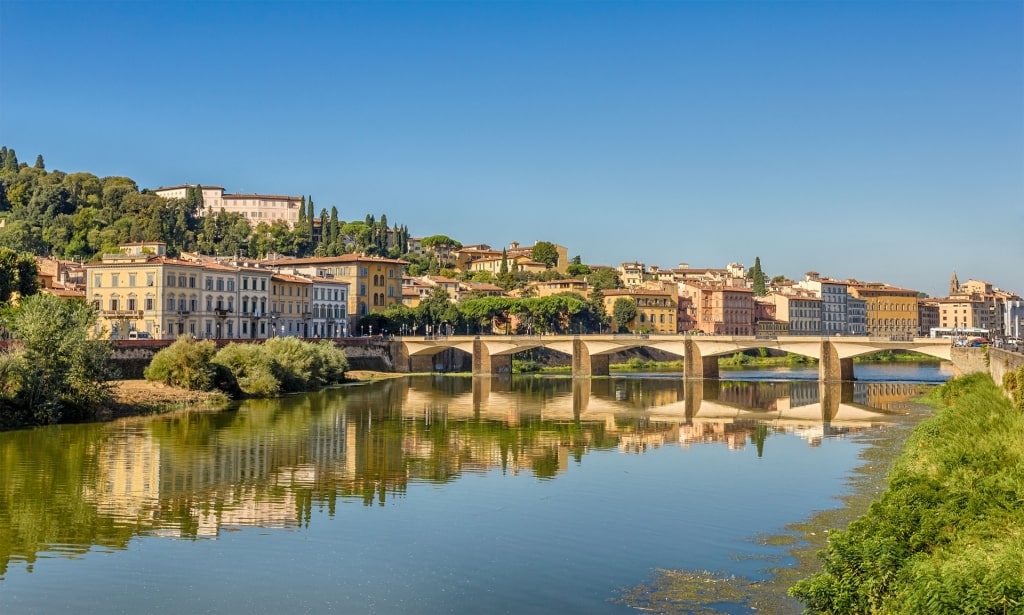
Ponte alle Grazie
Originally known as the Ponte di Rubaconte in honor of Rubaconte da Mandello, this bridge was once the third oldest in Florence, after the Ponte Vecchio and the Ponte alla Carraia. With nine arches, the bridge was the longest in the city.
After its destruction at the end of World War II, the Ponte alle Grazie was rebuilt in 1953. Unlike some of its neighbors, which remain aesthetically faithful to their Renaissance predecessors, the newer incarnation of this particular bridge has a subtly more modern look and feel to it.
Since this is Florence, you’re never far from world-class gelato. After crossing the Ponte alle Grazie, walk along the banks of the Arno toward the Ponte Vecchio until you find a branch of La Strega Nocciola Gelateria Artigianale.
Since 2004, this gelato shop, which has several locations in town, has built up a well-deserved reputation for using high-quality ingredients. The flavors here are resolutely classic, with perfectly executed scoops of nocciola (hazelnut) and stracciatella perpetually in rotation.
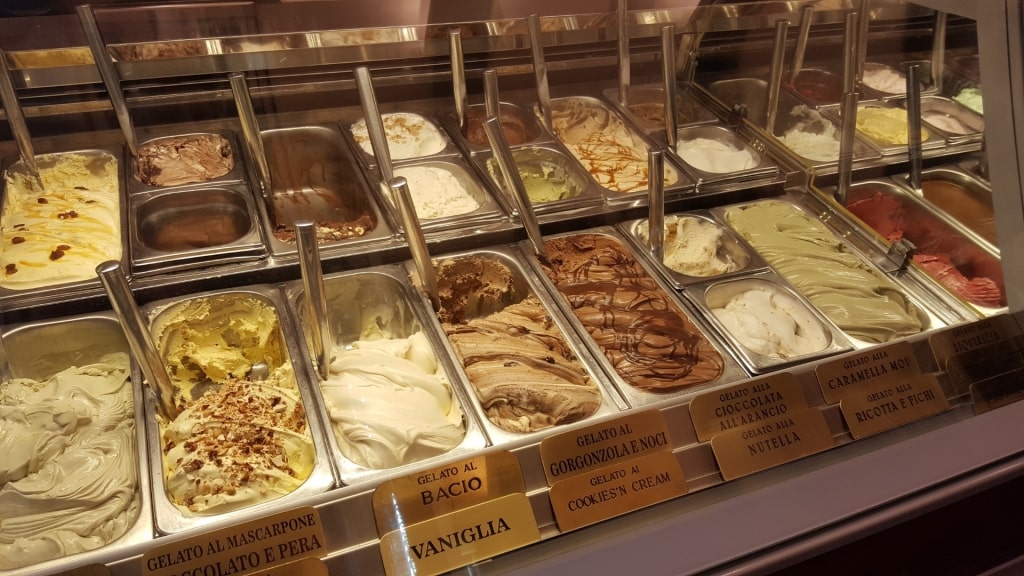
Gelateria dei Neri Photo by Jay Sobel on Flickr, licensed under Public Domain Mark 1.0
Another standout in the area is Gelateria dei Neri, which has been dishing out the good stuff since 1989.
Read: Best Things to Do in Florence at Night
Ponte all’Indiano
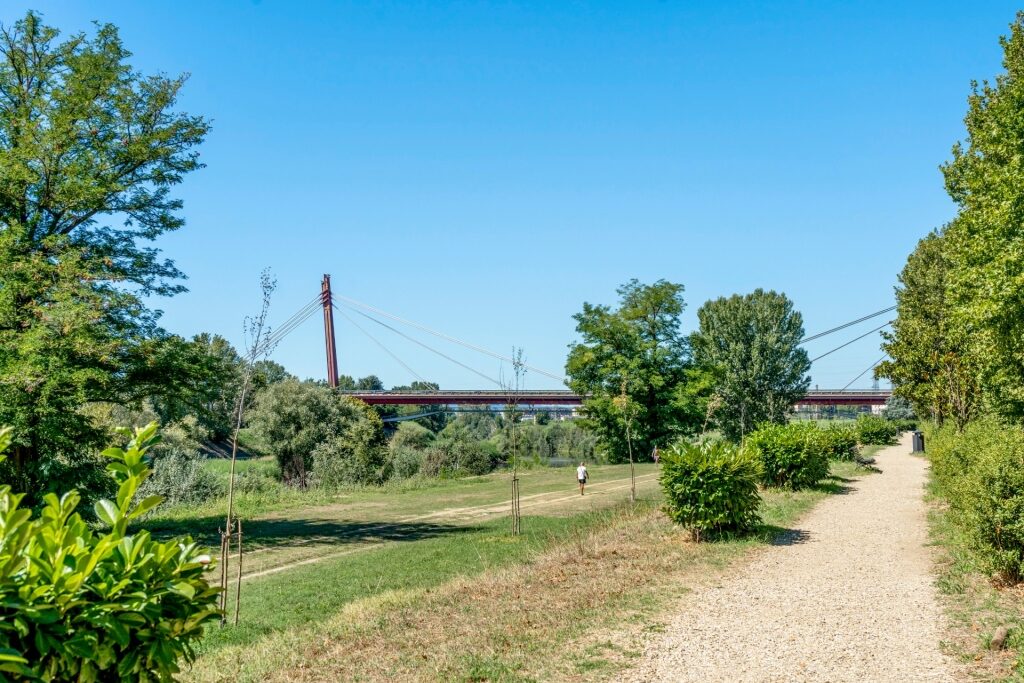
Ponte all’Indiano
Unlike most of Florence’s bridges, which can trace their lineage back to medieval times, the Ponte all’Indiano is a comparatively recent addition to the city.
When structural design engineer Fabrizio de Miranda, along with architects Paolo Sica and Adriano Montemagni designed it in the 1970s, it was the very first earth-anchored, cable-stayed bridge. It remains one of the longest bridges of its kind to this day.
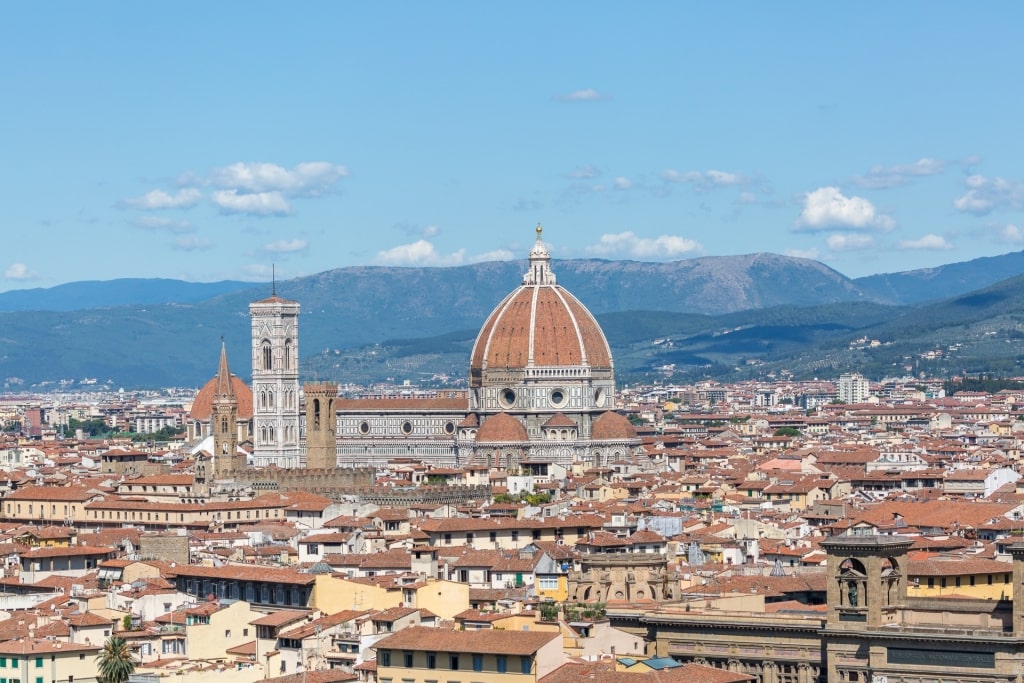
Florence
There’s no better way to pay a visit to the magnificent city of Florence than on a cruise. Browse Celebrity’s cruises to Florence and book your next voyage today.
